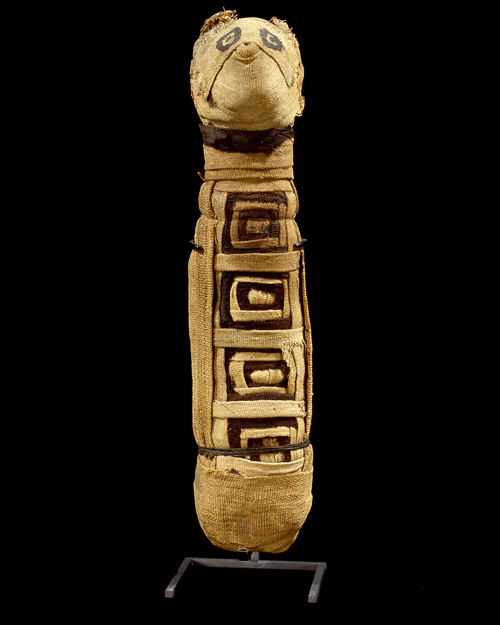
© 2000 Musée du Louvre / Georges Poncet
Organic materials
H.: 27 cm; W.: 6 cm; D.: 8 cm
Department of Egyptian Antiquities, Musée du Louvre
(N 2678)
Apart from mummies of sacred animals associated with a specific deity (for whom they were a living incarnation throughout their lives), most such mummies were votive items used as offerings in temples of the god with which that animal was linked. The cult of animal gods existed in Egypt since the pre-dynastic era. It spread further during the New Kingdom, assuming even greater importance from the Late Period into the Roman Period. Many mummies of this type date from these later periods. By dedicating an offering to the god, the donor would establish an eternal connection to the deity. Thus cats were offered to the goddess Bastet, dogs to the god Anubis, ibises or monkeys to the god Thot, etc. Less expensive than ex-votos made of metal, they could be purchased by pilgrims to the temples where the animals were raised. Presented to the god by a priest, they were then massively buried in special cemeteries scattered all across Egypt.
The quality of these mummies varies, probably as a function of the wealth of the donor. The finest, like this one, are carefully wrapped in bands of cloth and covered with masks of painted cartonnage. Examination has revealed that the animals were deliberately killed, often—in the case of cats—when they were just a few months old.